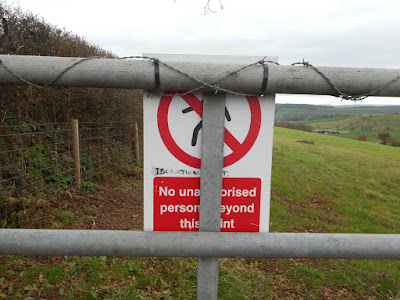Britain used to be like that too, until the thirteenth century when powerful people began to appropriate the countryside for themselves, ‘enclosing’ and fencing it and excluding everyone else. And the process continues, in ways both big (like roads and housing estates) and small.
When we first came to live in our current house over forty years ago, two farmers owned most of the land around and – with amazing kindness - let me wander where I liked. Now the land is broken up, with hedges fenced (instead of patched with old bedsteads, pallets and cattle feeders that I could climb over) and gates padlocked and the areas where I can walk reducing every day. What’s more, I get shouted at for walking on the road.
The poet John Clare went mad when the Northamptonshire countryside where he was born and brought up was cleared for intensive farming and shut off to the common people. George Monbiot in a superb article (in the Guardian in 2012) likens this process to the way indigenous peoples are torn from their land and culture, and their souls destroyed.
I feel the same sometimes and, before I get into one of my rants, I thought I’d share with you my collection of pictures on the subject. At the end of which, I will try to produce a happy ending. Promise.
My
current hope for the future is rewilding – allowing large areas of land to revert to their natural state,
bringing back flora and fauna once extinct in this country like beavers and
storks, removing fences, letting rivers take their own course, letting drained
marshlands flood again. Returning the countryside to a richness and diversity we
can hardly imagine now. And then joining
up these areas, so that richness and diversity are the norm.
I can only hope that we humans are allowed back too to these wild lands.
And here to finish is a picture of a van I saw in Glastonbury - that bastion of human diversity.






Hi B. I totally agree - what a powerful and passionate case you make - especially with the photos. Thanks for the links and for sharing your wild, caring heart with us. Xx
ReplyDeleteThank you Trish. So glad you like the post. I tried not to be too ranty or negative! (But so glad it's still powerful.) And so glad you agree and it's not just me . . . xx
ReplyDeleteLovely.
ReplyDelete